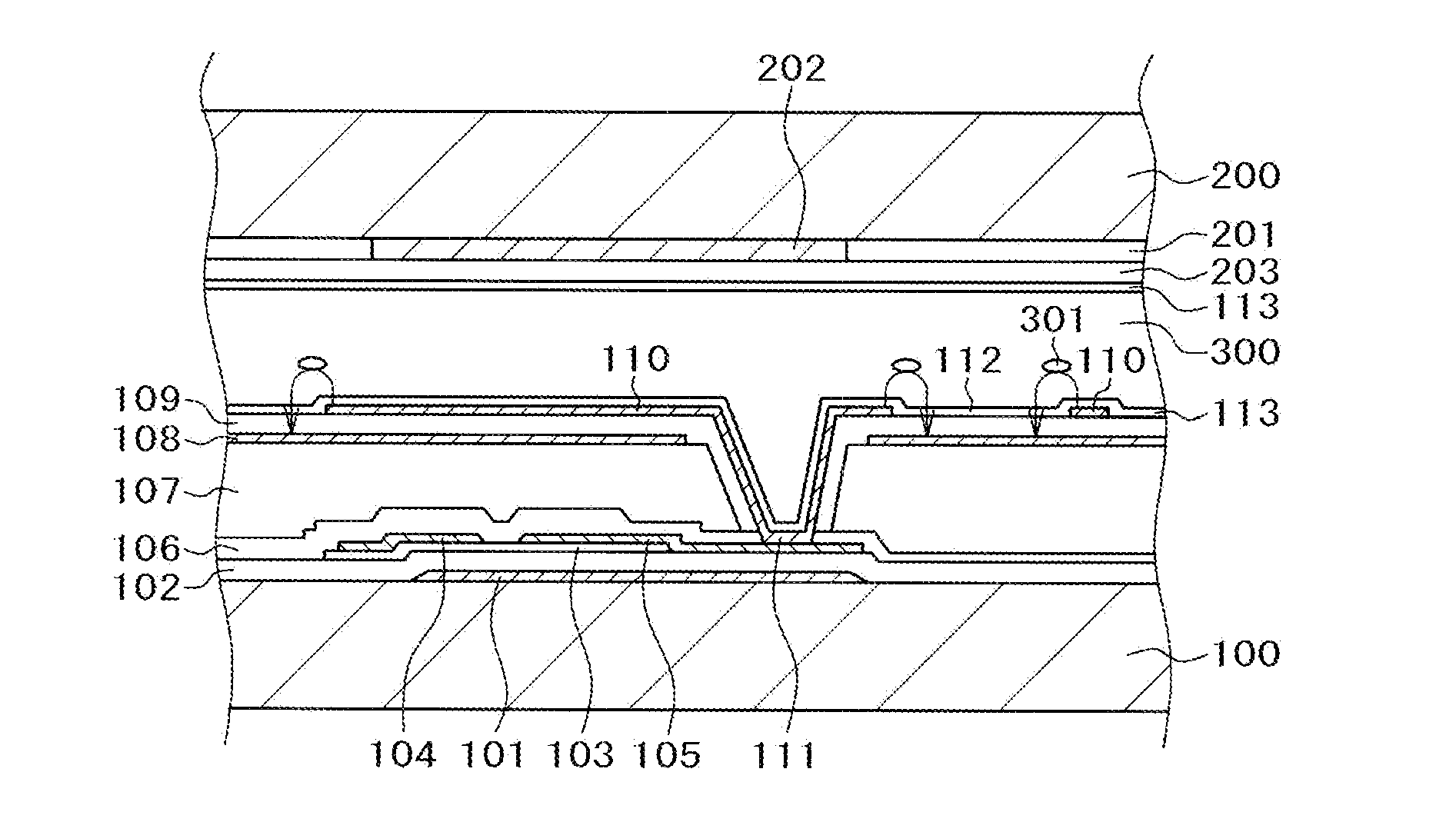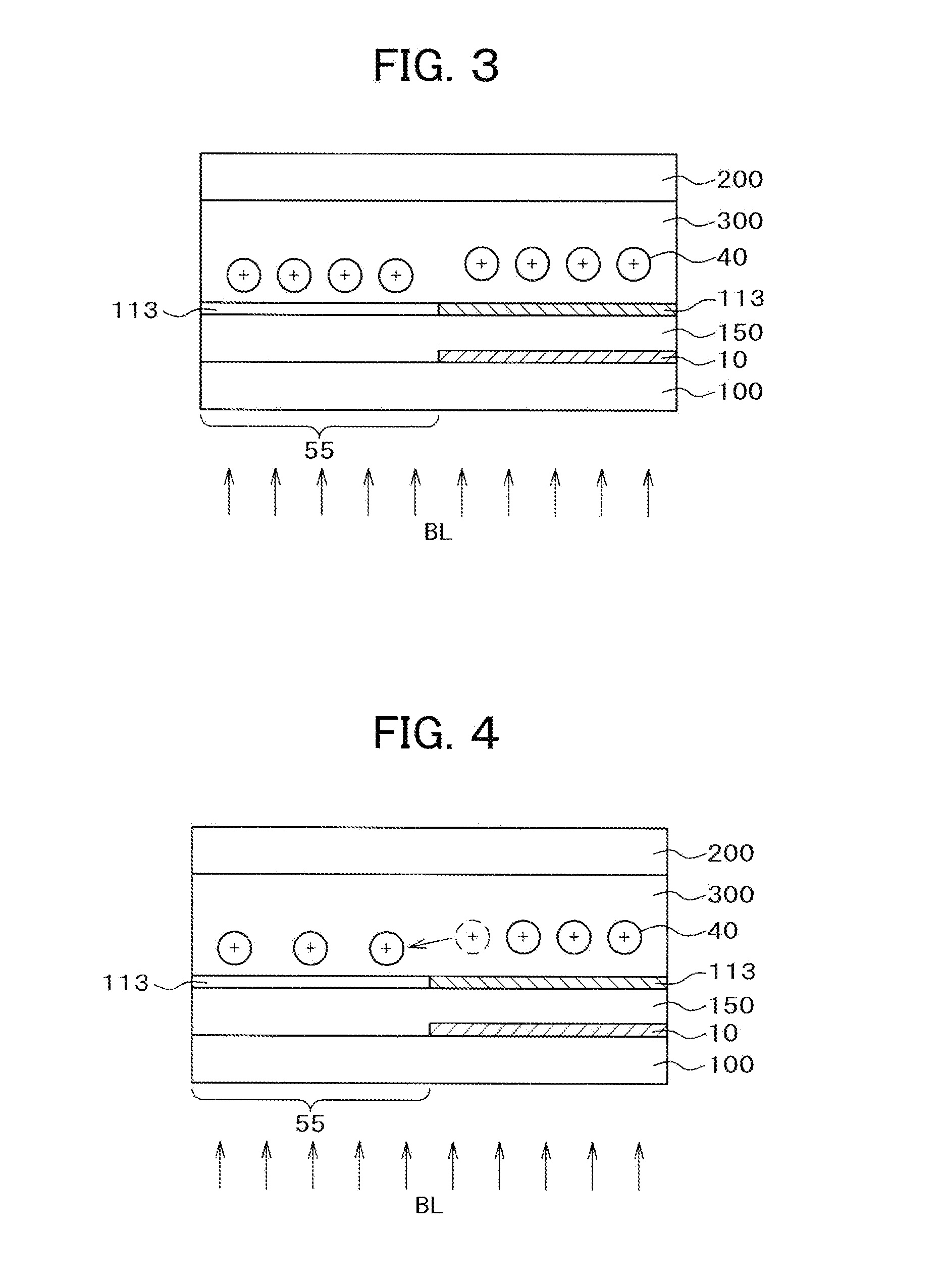Liquid crystal display device and manufacturing method thereof
a liquid crystal display and manufacturing method technology, applied in the manufacture of electrode systems, electric discharge tubes/lamps, instruments, etc., can solve the problems of reducing the stability of alignment treatment compared with rubbing treatment, display failure, and display failure typically represented by residual images, so as to improve residual image characteristics, reduce alignment film resistance, and excellent image quality
- Summary
- Abstract
- Description
- Claims
- Application Information
AI Technical Summary
Benefits of technology
Problems solved by technology
Method used
Image
Examples
first embodiment
[0058]FIG. 1 is a cross sectional view showing a configuration of a first embodiment of the invention and FIG. 2 is a plan view of the first embodiment. Prior to explanation of FIG. 1 and FIG. 2, a mechanism that a residual image is present for a long time is to be described with reference to FIG. 3 to FIG. 6. The residual image includes a so-called DC residual image of sticking and gradual elimination of a pattern when an identical image is displayed for a predetermined pattern, and a so-called AC residual image caused by lowering of the alignment performance of the alignment film. The invention provides a countermeasure against the so-called DC residual image.
[0059]FIG. 3 shows a state in which electric charges are accumulated on the surface of an alignment film 113 just after display of a predetermined pattern. In FIG. 3, a gate line 10 is formed over a TFT substrate 100, an intermediate layer 150 comprising various insulation layers such as a gate insulation film, an inorganic p...
second embodiment
[0077]FIG. 11 is a cross sectional view showing a configuration of a second embodiment of the invention in a display region and FIG. 12 is a plan view thereof. In the existent embodiment shown in FIG. 6, since no photoconductive effect is obtainable in the shielded portion of the alignment film 113, a problem exists in that the charges accumulated in the shielded portion cannot rapidly transfer to the opening portion due to high resistance. This embodiment has a feature of originally lowering the resistance in the shielded portion of the alignment film 113, even though the photoconductive effect cannot be obtained.
[0078]In the configuration of the second embodiment shown in FIG. 11, after an alignment film 113 is formed, an opening portion 55 is shielded by using a photomask 80 and UV-light is applied only to the shielded portion. A TFT substrate 100 formed with the alignment film 113 is placed over a hot plate 70 and the substrate is heated to 200° C. to 210° C. at the same time wi...
PUM
 Login to View More
Login to View More Abstract
Description
Claims
Application Information
 Login to View More
Login to View More - R&D
- Intellectual Property
- Life Sciences
- Materials
- Tech Scout
- Unparalleled Data Quality
- Higher Quality Content
- 60% Fewer Hallucinations
Browse by: Latest US Patents, China's latest patents, Technical Efficacy Thesaurus, Application Domain, Technology Topic, Popular Technical Reports.
© 2025 PatSnap. All rights reserved.Legal|Privacy policy|Modern Slavery Act Transparency Statement|Sitemap|About US| Contact US: help@patsnap.com



